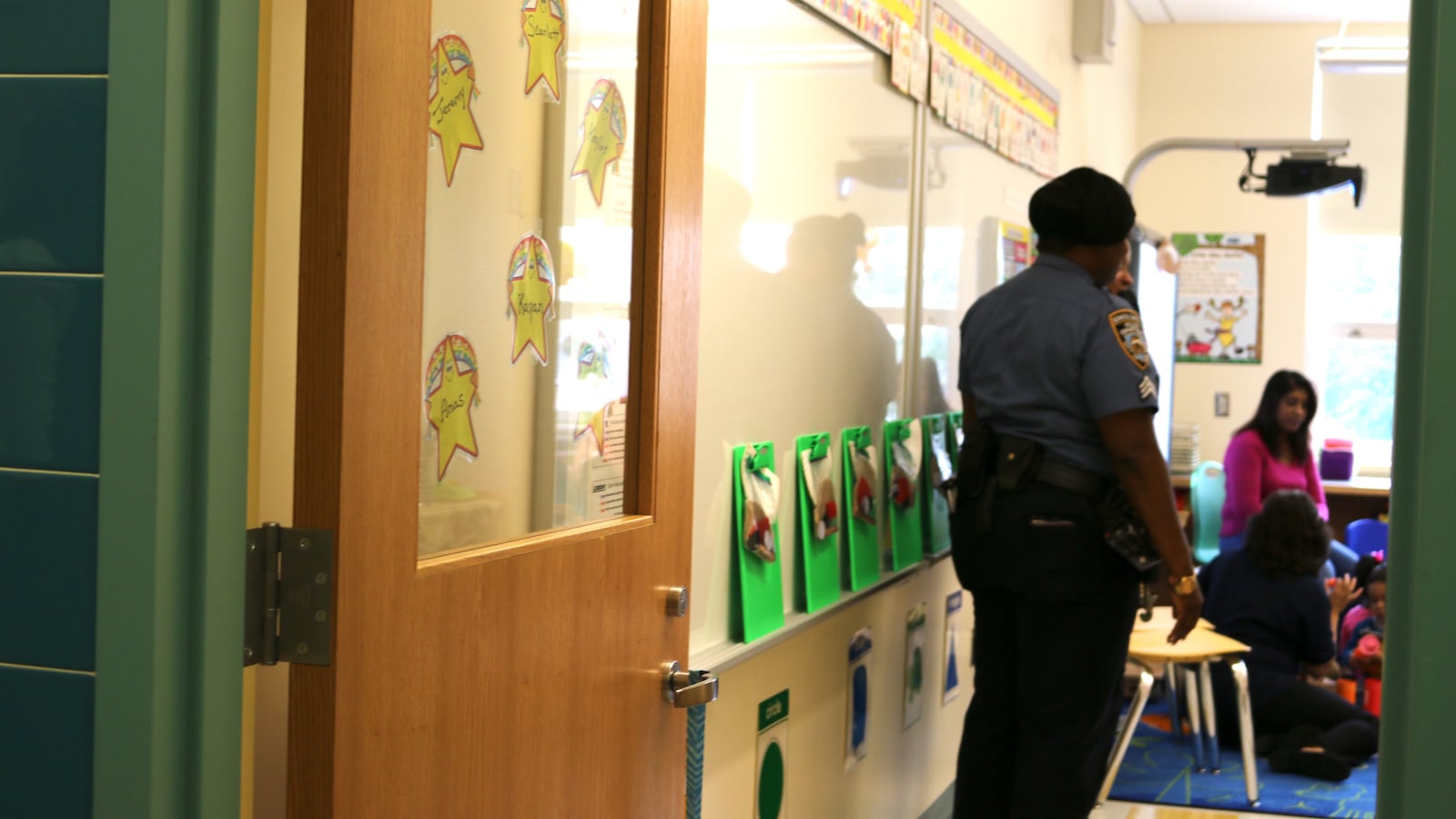When New York City police or safety agents respond to an incident at a school, they are more likely to take a student to the hospital for a psychological evaluation than to make an arrest or issue a summons, according to a new analysis of city data.
Last school year, nearly 29 percent of the 9,385 incidents where police or safety agents were called involved a “child in crisis,” in which the officer or agent determined the student needed to be taken to a hospital for a psychological evaluation. By contrast, 12 percent of the incidents resulted in arrests and 9 percent in summonses – a pattern that advocates say highlights a need for more mental-health professionals in schools.
Those statistics come from a report released this month by Advocates for Children, which analyzed police interactions with students from July 2016 to June 2017 — data the city was required to release for the first time last year under a new law. The statistics cover student interactions with school safety agents — who are police department employees stationed in schools — as well as patrol officers who might be called in by a safety agent or a staffer dialing 911.
The data reveal stark racial divides: Black students comprised nearly half of all children removed from school for evaluation, though they represent just 27 percent of the city’s school population. White students, by contrast, accounted for 5 percent of cases, despite being 15 percent of the school population.
Those disparities are also reflected in the use of handcuffs on students in emotional distress. Police used metal or Velcro handcuffs on black students in crisis 15 percent of the time, a higher rate than all other racial groups and almost twice the rate of white students.
To some advocates, the numbers raise questions about why police are so frequently called to respond to mental-health episodes.
“NYPD officers are there to enforce the law,” said Dawn Yuster, the School Justice Project director at Advocates for Children, and an author of the report. “When we have students with significant emotional challenges, we need [mental health professionals] trained to handle these students.”
Some 237,000 New York City children under 18 have a diagnosable mental health condition, according to Citizen’s Committee for Children of New York. Under Mayor Bill de Blasio, the city has ramped up mental-health services in schools, hiring additional counselors and opening mental-health clinics in some.
But advocates say the city has still not done enough to boost access to those services, and that training for school staff is inadequate. When school workers don’t have that training, advocates said, minor incidents can quickly boil over and draw a police response — major escalations that could be prevented.
Yuster pointed to a case where an 8-year-old boy with a disability was reprimanded after he poked another student with a spork. He then became agitated, which led the school to call in police officers who handcuffed the boy and insisted on sending him to the hospital even after his parents arrived.
“It’s not like these kids are spontaneously combusting,” she said. “There are so many signs along the way.”
Many of the mental-health crises involve young children.
Nearly half of police responses to children in crisis were for students 12 or younger, according to the report, with some involving students as young as four. The youngest child in emotional distress who was handcuffed was five years old.
Advocates say the city’s statistics likely under-represent the true number of police interventions linked to students experiencing a mental-health crisis. The numbers, for instance, do not include cases where police respond to students in emotional distress but do not transport them to the hospital for evaluation.
Of all police interactions, 40 percent were “mitigated,” meaning that police responded to an incident (including students in crisis) but determined the situation did not warrant further action. Students in emotional distress are also sometimes arrested, Yuster said, which also means they would not show up in the mental health statistics.
In response to the report, city officials emphasized they are investing more than $47 million per year on a range of school climate and mental health programs, including additional training.
“Providing all students with a safe, inclusive and supportive learning environment is our top priority,” education spokeswoman Miranda Barbot wrote in a statement. “We are continuing to expand programs and trainings, including training on restorative practices and de-escalation techniques and therapeutic crisis interventions.”

